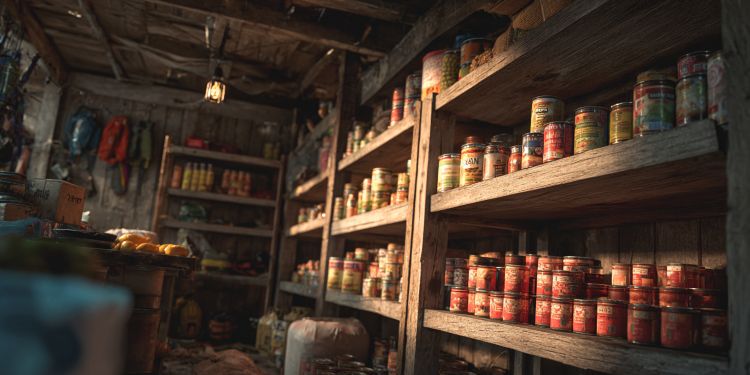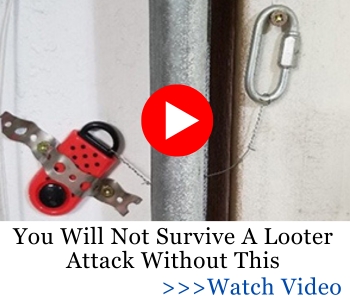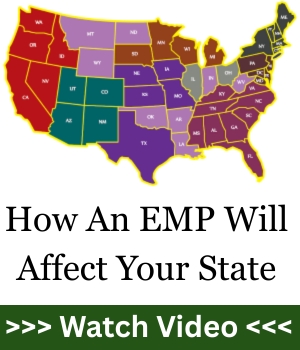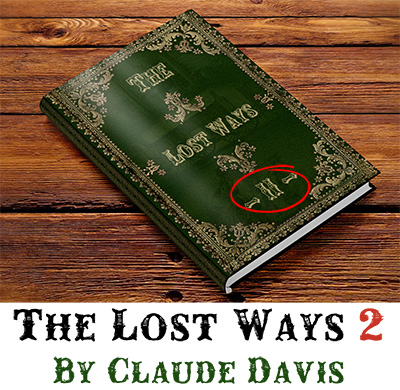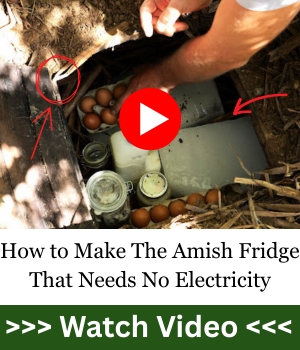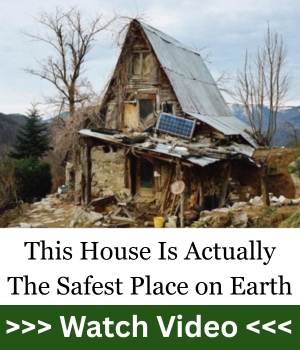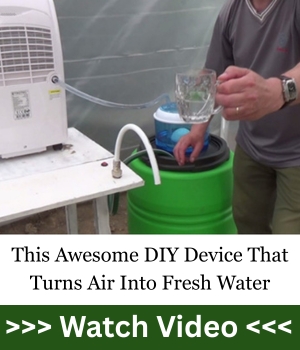Most people think survival begins the moment the lights go out. They imagine a dramatic instant where everything flips upside down. But collapse is not a single event. Collapse is a slope. It begins with a few strange shortages that do not add up. It deepens when distribution delays become normal. It accelerates when power grids fail for reasons that no one explains clearly. It becomes obvious when the government starts saying phrases like temporary disruption while stores stay empty for weeks.
The final stage is when the system stops pretending it can take care of you. At that point you have two choices. You rely on whatever you already have. Or you join the crowd of panicked, starving people fighting for scraps.
Canned food is the one category of supplies that still works even when everything else stops working. It is sealed. It is protected. It is immune to blackouts, supply shocks, logistic failures, refrigeration loss, or infrastructure disasters. You do not need electricity to open a can. You do not need clean water to cook it. You do not need stability to store it. That is why canned food becomes the backbone of real survival planning.
Before we start listing the most important cans, you need to understand the survival principles that make them essential.
Survival Principles You Are Not Taught In School
Why Canned Food Becomes the Foundation of Survival
In an emergency, food that requires refrigeration becomes worthless within hours. Food that requires cooking becomes dangerous if water is scarce. Food that requires preparation becomes stressful when time is short. Food that requires special tools becomes unusable if you lose access to them.
Canned food ignores all these weaknesses. It is the closest thing to collapse proof food you can buy. When modern systems fail, canned food becomes the last honest source of calories left.
The Collapse Curve No One Understands
Collapse happens in phases.
- Stage One is silence. Problems exist but no one talks about them.
- Stage Two is strain. Shelves thin. Prices rise. People pretend everything is fine.
- Stage Three is breakdown. Grid issues. Delays. Fuel shortages.
- Stage Four is panic. Society realizes the system is fragile.
- Stage Five is control. Lockdowns. Rationing. Authority mismanagement.
- Stage Six is violence. People turn on each other when resources vanish.
Canned food protects you through every phase because it does not need society to function.
The Nutrient Trap of Crisis Survival
People think you only need calories. That is wrong.
You need calories, fat, protein, carbs, fiber, and micronutrients. When one category disappears, your body begins collapsing from the inside.
Canned food provides the full spectrum. Not perfectly, but effectively enough to keep you alive and functional.
The Psychology of Survival Eating
The average unprepared person quits long before starvation. They quit because meals become repetitive. They quit because panic kills appetite. They quit because food becomes depressing.
Canned food gives you variety, flavor, texture, and comfort during the worst days. That matters. A lot more than people think.
The Top 10 Canned Foods You Need In Your Stockpile
Each food below contains:
- Why it matters when systems break
- How it saves you during real emergencies
- A real crisis case study
- What happens if you do not have it
- How much to stock for real survival
This is not a beginner list. This is a collapse list.
Diced Tomatoes
Tomatoes are the flavor engine of emergency food. They bring acidity, hydration, and morale in one can.
Why This Food Matters When Systems Break
Tomatoes transform bland staples into edible meals. During collapse your diet becomes repetitive and predictable. Tomatoes break that monotony. They also provide vitamin C, which prevents immune system decline during long stress periods.
How This Food Saves You in Real Emergencies
Tomatoes hydrate you, stretch your meals, improve digestion, and improve flavor. They allow you to make multiple servings out of limited staples. They keep appetite alive when stress kills it.
Real World Crisis Case Study
During the Balkan conflicts, diced tomatoes were a primary trade good because they made rice and pasta meals bearable. Families with tomatoes lasted longer before morale breakdown and appetite collapse.
What Happens If You Do Not Have This Food
You start eating less because meals become unbearable. Appetite fatigue sets in. You lose energy. You lose interest in eating at all. That is how slow starvation begins.
How Much To Stock
- Minimum: 20 cans per person
- Optimal: 30 to 40 cans per person
- Extreme: 50 plus for long term collapse planning
Corn
Corn is fast energy. It stabilizes blood sugar, supports physical endurance, and keeps the body responsive.
Why This Food Matters When Systems Break
Stress burns calories faster. Cold burns calories faster. Panic burns calories faster. Corn replenishes what crisis drains.
How This Food Saves You in Real Emergencies
Corn prevents dizziness, keeps your hands from shaking, restores focus, and supports stamina during long blackouts or evacuations.
Real World Crisis Case Study
During the Texas Freeze, canned corn became a top survival food because it could be eaten cold and provided instant energy. Families who had it experienced fewer collapses, fewer tremors, and fewer hunger driven panic reactions.
What Happens If You Do Not Have This Food
You experience energy collapse. Your blood sugar crashes. You become irritable, confused, and physically weak. You become a liability to yourself.
How Much To Stock
- Minimum: 30 cans per person
- Optimal: 40 cans per person
- Extreme: 50 to 60 cans for long term rotation
Green Beans
Green beans are not exciting but they keep your digestive system functioning when everything else is failing.
Why This Food Matters When Systems Break
When your diet becomes heavy in protein and carbs, digestion slows. That leads to pain, dehydration, and weakness. Green beans prevent that spiral.
How This Food Saves You in Real Emergencies
They hydrate you, give you fiber, and maintain nutrient balance. They prevent digestive shutdown which becomes dangerous in long emergencies.
Real World Crisis Case Study
After Hurricane Sandy, many survival related medical visits were caused by constipation and dehydration from poor diets. Families who had canned vegetables avoided those problems.
What Happens If You Do Not Have This Food
You become dehydrated, lethargic, bloated, and physically slow. Digestion issues lead to pain that affects every survival task.
How Much To Stock
- Minimum: 20 cans per person
- Optimal: 30 cans per person
- Extreme: 40 plus depending on protein heavy diets
Baked Beans
Baked beans are one of the most complete meals you can store. Protein, carbs, calories, fiber, and flavor in one can.
Why This Food Matters When Systems Break
Baked beans keep you full for hours and stabilize your energy curve.
How This Food Saves You in Real Emergencies
They prevent blood sugar crashes, support physical labor, and reduce hunger anxiety. They can be eaten cold without losing nutritional value.
Real World Crisis Case Study
During the early pandemic months of 2020, baked beans vanished from shelves first because they were recognized as calorie dense no prep survival food that outlasted panic buying.
What Happens If You Do Not Have This Food
You will burn through energy too quickly. You will feel hungry constantly. You will become unfocused and unreliable.
How Much To Stock
- Minimum: 25 cans per person
- Optimal: 40
- Extreme: 60 or more for families relying heavily on beans
Tuna in Oil
Tuna in oil is the single most underrated survival food. It provides the fat your brain needs to function.
Why This Food Matters When Systems Break
Fat is survival fuel. Oil packed tuna is high fat and high protein which keeps cognition sharp and body temperature higher.
How This Food Saves You in Real Emergencies
Fat keeps you warm in cold environments. Fat stabilizes mood. Fat fuels long energy cycles. Tuna in oil prevents mental fog and physical weakness.
Real World Crisis Case Study
After the 2011 Japan tsunami, high fat foods like tuna in oil became essential because they required no cooking and prevented cognitive decline under stress.
What Happens If You Do Not Have This Food
You become mentally slow, emotionally unstable, and physically weak. Fat deficiency kicks in quickly under stress.
How Much To Stock
- Minimum: 20 cans per person
- Optimal: 30
- Extreme: 40 plus for cold climate survival
Chili with Beans
This is the closest thing to a complete cooked meal in a can.
Why This Food Matters When Systems Break
Chili contains meat, beans, sauce, salt, and calories. When stress is high, chili feels like comfort.
How This Food Saves You in Real Emergencies
Chili boosts morale, restores electrolytes, and provides warmth and satisfaction. Emotional stability is a survival tool.
Real World Crisis Case Study
During wildfire evacuations in California, chili became a camp staple because it heated quickly and filled people completely.
What Happens If You Do Not Have This Food
Your meals feel incomplete. You lose emotional energy. You crave warmth and comfort. This affects mental stability.
How Much To Stock
- Minimum: 20 cans per person
- Optimal: 30
- Extreme: 40 plus for long stress events
Roast Beef
Roast beef is strength in a can. Pure survival power.
Why This Food Matters When Systems Break
Meat becomes rare during collapse. Canned beef becomes a primary source of strength preserving protein and fat.
How This Food Saves You in Real Emergencies
It keeps your muscles functioning during physically demanding tasks. It prevents weakness in cold weather.
Real World Crisis Case Study
During the Venezuelan economic collapse, canned meats like roast beef were top currency items and critical for physical survival.
What Happens If You Do Not Have This Food
You lose muscle mass quickly. Your strength decays. You cannot carry gear. You cannot defend yourself.
How Much To Stock
- Minimum: 15 cans per person
- Optimal: 25
- Extreme: 30 plus for labor heavy scenarios
Beef Stew
Beef stew is hydration, warmth, nutrition, and comfort built into one can.
Why This Food Matters When Systems Break
It provides broth, vegetables, protein, and starch. It hydrates and warms you simultaneously.
How This Food Saves You in Real Emergencies
It stabilizes body temperature, improves hydration, and calms emotional stress after long days.
Real World Crisis Case Study
During multi day highway freezes, stranded drivers survived on canned stews because they could be warmed with minimal fuel.
What Happens If You Do Not Have This Food
You lose access to hydrating meals. Your body temperature drops more easily. Your morale suffers dramatically.
How Much To Stock
- Minimum: 20 cans per person
- Optimal: 30
- Extreme: 40 plus for cold region households
Chunk Chicken Breast
Chunk chicken is your lean protein survival anchor.
Why This Food Matters When Systems Break
Protein prevents muscle loss and keeps your body capable of performing survival tasks.
How This Food Saves You in Real Emergencies
It maintains muscle mass, improves recovery, and mixes with virtually every survival carb you store.
Real World Crisis Case Study
During prolonged hurricane outages, families with canned chicken maintained strength and stamina while others relying on carbs fatigued fast.
What Happens If You Do Not Have This Food
Your strength erodes. Your stamina plummets. Your muscle breaks down for energy, leaving you vulnerable.
How Much To Stock
- Minimum: 20 cans per person
- Optimal: 30
- Extreme: 40 plus for highly active survival plans
SPAM
SPAM is caloric dominance. It is the survival cheat code.
Why This Food Matters When Systems Break
It delivers salt, fat, protein, and calories. It lasts nearly forever and thrives without refrigeration.
How This Food Saves You in Real Emergencies
It gives you explosive energy during high exertion tasks. It keeps you warm. It restores electrolytes.
Real World Crisis Case Study
During shipping disruptions in the Pacific, SPAM kept entire communities alive due to long shelf life and dense calories.
What Happens If You Do Not Have This Food
When you need a calorie surge quickly, you will not have it. You will risk collapse during physical tasks.
How Much To Stock
- Minimum: 10 cans per person
- Optimal: 20
- Extreme: 30 plus for high exertion scenarios
Recommended Read: The Dollar Apocalypse
If you believe collapse will only come through storms or grid failures, you are missing the biggest threat of all. The dollar is weakening. Prices rise while wages stall. Supply chains wobble. Debt climbs without stopping. The people in charge pretend everything is fine because panic is bad for politics.
The Dollar Apocalypse explains the truth behind the headlines. It shows how inflation quietly destroys your savings. It reveals why grocery shelves thin without warning. It uncovers the hidden mechanisms behind economic breakdown and why the average American becomes collateral damage when the dollar slips.
Inside the book, you will discover:
- How inflation masks real shortages
• Why currency value drops long before anyone admits it
• How food, fuel, and medicine become strategic assets
• What to stock when purchasing power collapses
• How to position your family before the next financial shock hits
If you want to understand why prepping is not paranoia but simple math, The Dollar Apocalypse is the book the authorities hope you never read.
Click here to buy The Dollar Apocalypse!
Recommended Read: Navy Seal’s Bug-in Guide
Most people fantasize about bugging out. They imagine grabbing a bag and running into the wilderness. That is romantic fiction. In real crises, bugging out becomes the worst choice unless you are already a survival expert. Everyone else stays home. That is why The Bug In Guide is one of the most important resources you can read.
The stockpiling section of this book is a blueprint for real survival. It teaches you how much food you need. How much water you need. How to rotate your supplies without wasting them. How to build a hardened home that can withstand grid failures, storms, riots, and shortages.
If you want a practical plan instead of fantasy scenarios, The Bug In Guide gives you the stockpiling strategy that keeps your family alive when the outside world becomes a threat instead of a resource.
Click here to buy the Navy Seal’s Bug-in Guide!
Final Thoughts
Most people assume they will rise to the occasion when disaster strikes. They believe instinct will kick in. They believe adrenaline will guide them. They believe they will somehow become stronger, smarter, tougher, and more capable simply because the situation demands it.
- That has never been true.
- You do not rise to the level of your hopes.
- You fall to the level of your preparation.
Canned food is not exciting. It will never trend. It will never make you look tactical. It will never earn applause. But it will feed you when your city goes dark. It will keep you warm when fuel runs dry. It will keep you sane when the world around you stops making sense. It will outlast panic buyers, incompetent officials, price spikes, trucking failures, and any government promise that begins with the words temporary disruption.
Collapse rewards the prepared and punishes the optimistic. Every can you store is one more day where your family stays calm while the rest of the neighborhood turns to chaos. Every shelf you fill is one more barrier between you and desperation. Every quiet decision you make today becomes the advantage you hold tomorrow.
You do not prep because you expect disaster.
You prep because you refuse to live at the mercy of a system that cannot save itself.
You may also like:
Battle-Tested Army Survival Tactics You Can Rely On When Crisis Strikes (VIDEO)
How Did People Survive the Wilderness Road?
Safe Natural Alternatives to Tylenol

